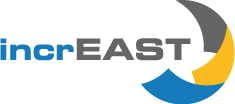

Table 1. Main Science and Technology Indicators:
2009 2010 2011 2012 Gross domestic expenditure on R&D, million roubles,
before 1998 – billion roubles:at current prices 485834.3 523377.2 610426.7 699869.8 at constant 1989 prices 6.07 5.86 5.90 6.11 Gross domestic expenses on R&D: as a percentage of GDP 1.25 1.13 1.09 1.12 as a percentage compared to the previous year at constant 1989 prices 110.6 94.2 101.0 105.7 Federal budget appropriations on civil S&T, million roubles,
before 1998 – billion roubles:at current prices 219053.4 237644.0 313899.3 355921.1 at constant 1991prices 7.50 7.13 8.15 8.52 as a percentage of GDP 0.56 0.51 0.56 0.57 National R&D personnel, thousand 742.4 736.5 735.3 726.3 Researchers, thousand 369.2 368.9 374.7 372.6 Researchers per R&D institution, head-count 104 106 102 104 Researchers per 10000 employed, head-count 55 55 55 55 201 Science Indicators: 2014. Statistical data book. Moscow, Higher School of Economics, 2014. pp. 17-20.
Research performers
The S&T institutional structure has a number of specific features that distinguish Russia from most of the other developed countries. There are about 3,600 R&D organisations operating in Russia (see Table 2).
Table 2. R&D institutes by type:
2009 2010 2011 2012 Total 3536 3492 3682 3566 Research institutes 1878 1840 1782 1744 Design organisations 377 362 364 338 Construction project and exploration organisations 36 36 38 33 Experimental enterprises 57 47 49 60 Higher education institutions 506 517 581 560 Industrial enterprises 228 238 280 274 Others 454 452 588 557
2 Science Indicators: 2014. Statistical data book. Moscow, Higher School of Economics, 2014. p. 26.
Russian R&D organisations are divided into four main sectors, depending on their main activity and functions:
The years of reform have brought significant changes to the governmental and business enterprise sectors. Paradoxically for a market economy, one can notice considerable growth in the governmental sector and an equally significant decline in the number of R&D organisations in the business enterprise sector.
Table 3. Number of R&D organisations by sector of science:
Total Governmental
SectorBusiness Enterprise
SectorHigher Education
SectorSector of
Non-profit Organisations2009 3536 1406 1446 603 81 2010 3492 1400 1405 617 70 2011 3682 1457 1450 696 79 2012 3566 1467 1362 660 77
3 Science Indicators: 2014. Statistical data book. Moscow, Higher School of Economics, 2014. p. 122
Specific weight of the government sector in overall R&D expenditure in 2012 was 32,2%, which is significantly higher than an OECD countries average (ca. 13.2% in 2012). In 2000-2012, R&D expenditure in the business enterprise sector increased 1.5 times (in constant prices), in the governmental sector – 2.4 times, in the higher education sector – 3.8 times, in the sector of non-profit organisations – 1.5 times.
Research funding system
R&D funding sources in the Russian Federation include the following:
The state budget remains the biggest source of funding for Russian science. Almost 97% of the funding comes from the federal budget, and only 3% - from all regional budgets put together.
During the last ten years, the structure of sectoral R&D expenditures in Russia has remained practically unchanged. Almost all expenditure is received by the business enterprise (58.3% in 2012) and governmental (about 32.2% in 2012) R&D sectors. The business enterprise sector’s share in the total R&D expenditure in Russia is comparable with the level of other developed countries (e.g. the USA had 68.3% in 2012). However, the composition of this sector in Russia is quite different from other developed countries. In Russia, the business enterprise sector includes many government-owned companies and organisations, while in other countries it mostly comprises private companies.
In 2000-2012, federal budget appropriations for civil R&D grew 2.3 times (at constant 1991 prices), mainly due to increased federal budget funding. In the organizations of the Russian Academy of Sciences (RAS), R&D expenditures financed by the state for the same period increased 2.2 times. The share of RAS in total R&D expenditure grew from 9.7% in 2000 to 10.5% in 2012.
The share of governmental funding in the gross domestic R&D expenditure in 2012 was close to 67.8%, which is much higher than, for example, the average for the OECD countries (about 35.6% in 2012). Expenditure on R&D undertaken in the governmental sector amounts to about 0.36% of the GDP (in 2012).
Source: HSE
Last update: March 2014
[PDF - 270.6 kB]

(general information - research structure - research policies - international cooperation) (URL: http://www.increast.eu/_media/Russia_Country_Report_EN_2014.pdf)
This external link opens a new window:
(A year long series of events and initiatives to promote EU-Russia S&T; cooperation) (URL: http://eu-russia-yos.eu/en/index.php)
This external link opens a new window:
(Identify and analyse the S&T; Potential of EU-Russia Cooperation) (URL: http://www.st-gaterus.eu/)
This external link opens a new window:
(link to ERAWATCH website: profile is also available as PDF download) (URL: http://erawatch.jrc.ec.europa.eu/erawatch/opencms/information/country_pages/ru/country)